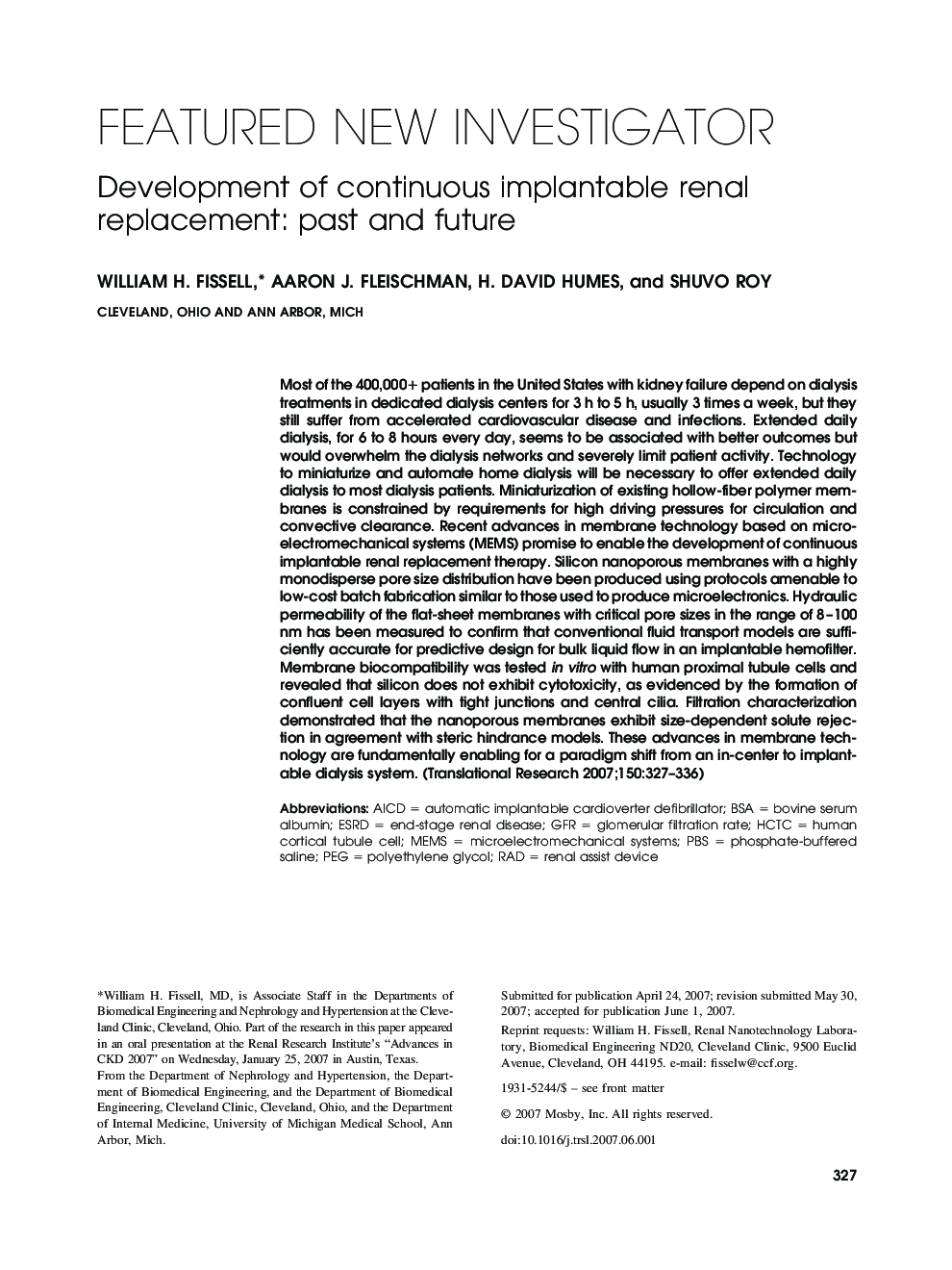| Article ID | Journal | Published Year | Pages | File Type |
|---|---|---|---|---|
| 3841491 | Translational Research | 2007 | 10 Pages |
Most of the 400,000+ patients in the United States with kidney failure depend on dialysis treatments in dedicated dialysis centers for 3 h to 5 h, usually 3 times a week, but they still suffer from accelerated cardiovascular disease and infections. Extended daily dialysis, for 6 to 8 hours every day, seems to be associated with better outcomes but would overwhelm the dialysis networks and severely limit patient activity. Technology to miniaturize and automate home dialysis will be necessary to offer extended daily dialysis to most dialysis patients. Miniaturization of existing hollow-fiber polymer membranes is constrained by requirements for high driving pressures for circulation and convective clearance. Recent advances in membrane technology based on microelectromechanical systems (MEMS) promise to enable the development of continuous implantable renal replacement therapy. Silicon nanoporous membranes with a highly monodisperse pore size distribution have been produced using protocols amenable to low-cost batch fabrication similar to those used to produce microelectronics. Hydraulic permeability of the flat-sheet membranes with critical pore sizes in the range of 8–100 nm has been measured to confirm that conventional fluid transport models are sufficiently accurate for predictive design for bulk liquid flow in an implantable hemofilter. Membrane biocompatibility was tested in vitro with human proximal tubule cells and revealed that silicon does not exhibit cytotoxicity, as evidenced by the formation of confluent cell layers with tight junctions and central cilia. Filtration characterization demonstrated that the nanoporous membranes exhibit size-dependent solute rejection in agreement with steric hindrance models. These advances in membrane technology are fundamentally enabling for a paradigm shift from an in-center to implantable dialysis system.
